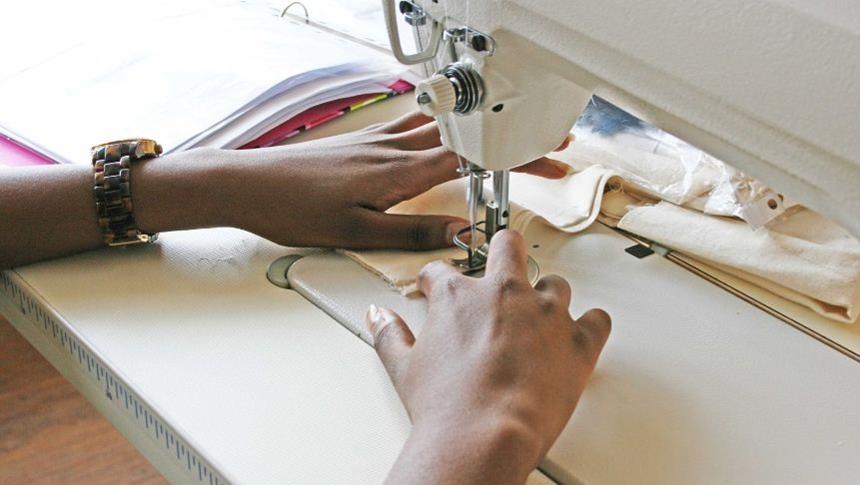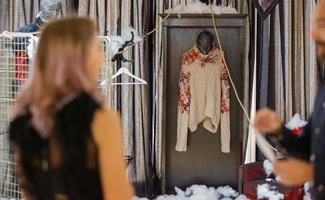HND fashion and textile courses have gained popularity among fashion enthusiasts as they can help individuals establish themselves in the fashion industry. This industry offers plenty of opportunities for people who are creative and have a knack for fashion and textile design. An HND programme in fashion and textile design is structured to enable students to combine their creative and managerial skills to generate innovative ideas and shape the future of this industry. This blog looks at how pursuing this programme can help you make a mark in the fashion world.
Learn with a purpose
HNC/D Fashion and Textiles programmes are based on the current research and professional practices relevant to the fashion and textiles industry. It equips students with the necessary skills to be put into practice in this field. Students are trained in the areas of academic writing, time management, critical thinking, teamwork and presentation skills. Pursuing this course enables students to reach their potential by expressing ideas and showcasing their talents.
Unleash your creative ideas
An HNC/D Fashion and Textiles course can help students develop their skills and learn more about fashion aesthetics. With this course, students can land a job in fashion, textiles and accessories design, visual merchandising, journalism or writing and trend prediction. During the course, students will learn about the history of fashion and textiles as well as several modern design techniques. As a part of their profession, they are required to produce their own collection of clothing or create a portfolio of their work.
Career opportunities in fashion and textiles
Garment Technologists (average annual salary: £28,223) – Garment technologists typically work for fashion retail outlets and garment manufacturers. They oversee all stages of product development, starting from design to manufacture. They have an understanding of both garment construction and textile manufacturing techniques and work closely with the production team to carry out the following responsibilities:
o Evaluating textiles materials;
o Checking the quality of the final product;
o Ensuring collections are produced on time and within the budget;
o Improving production efficiency and the quality of developed products;
o Responding to product queries or complaints from wholesalers and customers.
Fashion Journalist– Fashion journalists work for publication houses or fashion firms, where they report on the latest fashion trends through various media outlets. Their write-ups are generally published in magazines, newspapers, websites and social media channels. Their daily tasks involve researching and fact-checking before they submit their articles. They also use their knowledge about fashion, journalism and business to communicate directly with the public and generate sales for a particular brand. Fashion journalists are generally required to stay up-to-date with the latest textiles trends and emerging technologies to carry out responsibilities, such as:
o Developing ideas for a story and pitching it to the fashion director;
o Writing articles, blogs or copies for media outlets;
o Uploading content to publication websites;
o Reporting in a traditional but factual manner;
o Garnering social media attention for a particular brand;
o Building professional relationships with public relations officers, fashion and textile designers and stylists;
o Conducting interviews and attending fashion events.
Pattern Cutter (average annual salary: £25,150) – Pattern cutting involves altering and shaping fabric rolls by using machines and technically controlled tools. Pattern cutters generally work in workshops, factories or creative studios, where they use a pattern or cut-out pieces of fabric to design clothes. Through the use of computer-generated models they are able to analyse how a pattern can take the shape of a garment. In addition to their interest in fashion and trends, pattern cutters also able to accurately interpret sketches made by a designer. Forming the link between the design and manufacturing stages is an integral part of the job. It is therefore necessary to liaise with fashion and textiles designers and clothing manufacturers to execute duties such as:
o Creating pattern templates;
o Making clothing samples;
o Draping sample pieces over mannequins;
o Altering non-standard pattern bases (or blocks);
o Checking the quality of material before putting it through the cutting process;
o Keeping a check on the stock levels of materials;
o Storing fabrics appropriately in the textile warehouse.
Opting to study a certificate course in fashion designing can help you acquire research and development skills in the field of fashion and textiles. Apply to the HNC/HND Fashion and Textiles course offered by the London College of Contemporary Arts (LCCA) to develop your creative skills in fashion and textile design.
This article was written by Deblina Dam and edited by Amelia Hayward-Cole.


 How can the fashion industry become more sustainable?
How can the fashion industry become more sustainable?  Fashion Innovation Week
Fashion Innovation Week  Fashion Business and Management 101: Mastering the Art of Selling Style
Fashion Business and Management 101: Mastering the Art of Selling Style  Is the fashion industry becoming more inclusive in 2022?
Is the fashion industry becoming more inclusive in 2022?